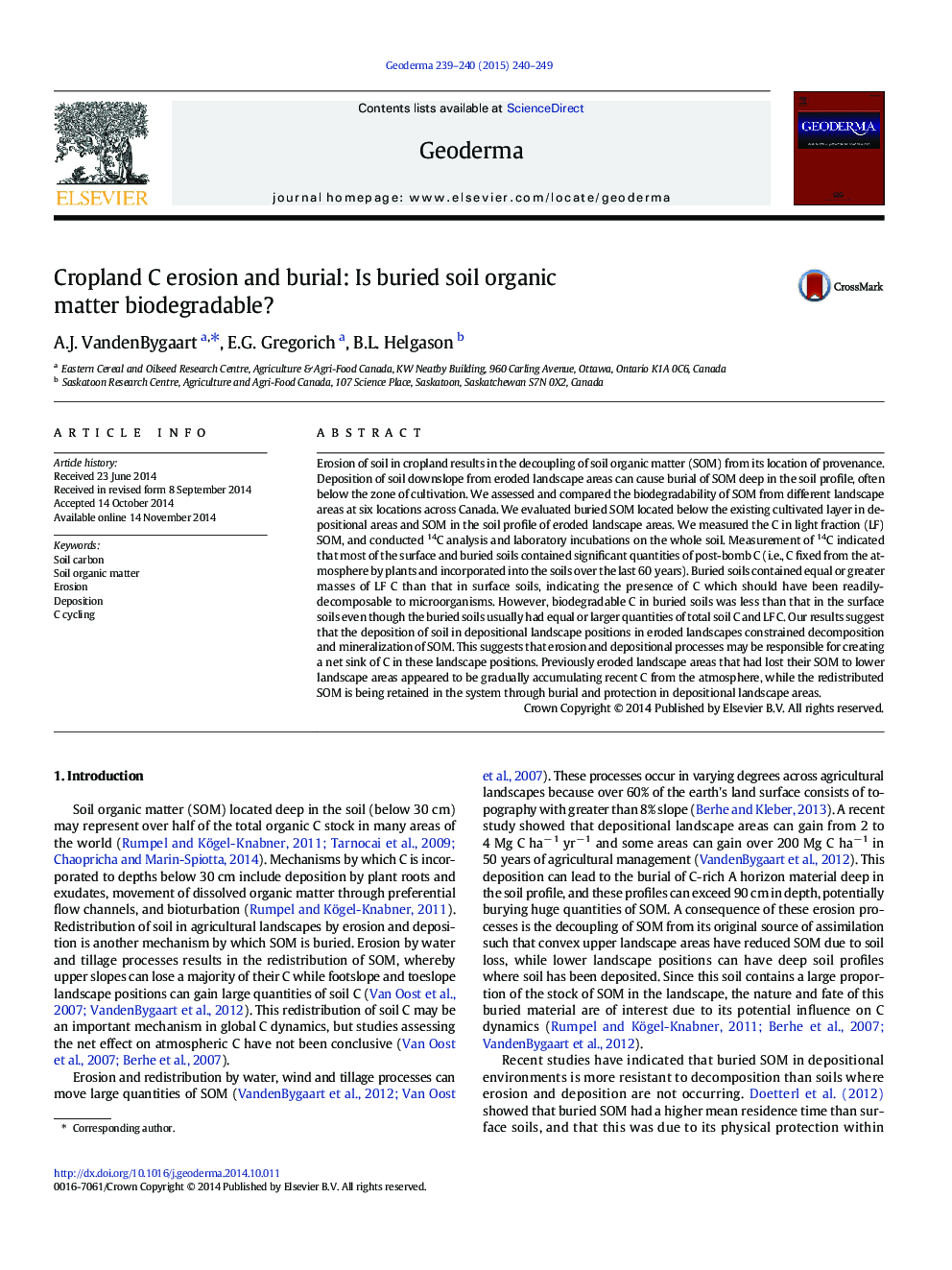| کد مقاله | کد نشریه | سال انتشار | مقاله انگلیسی | نسخه تمام متن |
|---|---|---|---|---|
| 6408672 | 1629466 | 2015 | 10 صفحه PDF | دانلود رایگان |
- Deposition of eroded soil C resulted in the burial of soil C deep below the surface.
- Eroded C is actively being replaced by C from primary productivity.
- Buried SOC in depositional areas may not be as labile as SOC on the surface.
- Data provide strong evidence in support of the erosion-induced SOC sink.
Erosion of soil in cropland results in the decoupling of soil organic matter (SOM) from its location of provenance. Deposition of soil downslope from eroded landscape areas can cause burial of SOM deep in the soil profile, often below the zone of cultivation. We assessed and compared the biodegradability of SOM from different landscape areas at six locations across Canada. We evaluated buried SOM located below the existing cultivated layer in depositional areas and SOM in the soil profile of eroded landscape areas. We measured the C in light fraction (LF) SOM, and conducted 14C analysis and laboratory incubations on the whole soil. Measurement of 14C indicated that most of the surface and buried soils contained significant quantities of post-bomb C (i.e., C fixed from the atmosphere by plants and incorporated into the soils over the last 60Â years). Buried soils contained equal or greater masses of LF C than that in surface soils, indicating the presence of C which should have been readily-decomposable to microorganisms. However, biodegradable C in buried soils was less than that in the surface soils even though the buried soils usually had equal or larger quantities of total soil C and LF C. Our results suggest that the deposition of soil in depositional landscape positions in eroded landscapes constrained decomposition and mineralization of SOM. This suggests that erosion and depositional processes may be responsible for creating a net sink of C in these landscape positions. Previously eroded landscape areas that had lost their SOM to lower landscape areas appeared to be gradually accumulating recent C from the atmosphere, while the redistributed SOM is being retained in the system through burial and protection in depositional landscape areas.
Journal: Geoderma - Volumes 239â240, February 2015, Pages 240-249
